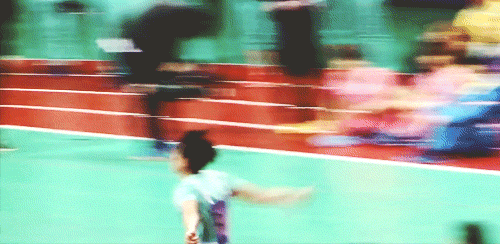High Jump Technique For Beginners
The highlight of any high jump performance is the moment when the athlete soars over the bar, completely clearing it before landing gracefully on the mat. To any inexperienced onlookers, this may appear as the most difficult task in the event, however, that’s incorrect. There is much more that goes into high jumping than just clearing the bar, and any aspiring athletes must master their approach, takeoff, and flight techniques before they have any chance of moving on to higher heights. The next time you’re looking to take your game to another level, grab our quick guide to high jumping and working!

The Approach
Jumpers must master an approach that is controlled as well as rhythmic. An ineffective or inconsistent approach will make very talented jumpers miss relatively easy attempts. Thus, beginners should first focus on this aspect of the performance before moving on to learning proper takeoff and flight techniques.
Most athletes employ a ten step, ‘J-shaped’ approach with five steps on the straightaway, to build up speed and forward momentum, and five steps on the curve leading up to the mat. Typically, you’ll lead with the foot that you take off with. The first two steps are the driving phase, but continue accelerating on the third step and into the turn. You want your next strides in the curve to be fast — with your hips high and your center of gravity inclined away from the bar. Ultimately, the approach should feel like going into a turn on the track, so look to create that feeling of comfortability. Many jumpers make the mistake of bounding during their strides, but try not to as it’s awkward and generates less momentum.
Establishing the starting mark for the approach depends on the jumper, as it varies according to height, speed, and physiological gender. It takes tons of trial and error to determine the best, exact location for your start, so try not to get frustrated. A rough estimate for males is 12-16 feet out and and 50-65 feet back from the near standard, while females typically start 9-13 feet out between 35-55 feet back.
The Takeoff
Speed is key when taking off. Assuming your technique is perfect, the faster you run, the higher you will go. Most athletes tend to lean in towards the bar when they are planting their take off foot, but this is incorrect. As much as possible, you’ll want to take off vertically, even if it seems weird at first. Think about it this way — you want to go up and over the bar, not through it, right? When the takeoff foot is planted, your back should be to the bar, this is absolutely crucial. The last two steps should be full-foot contact with the ground. When you plant your takeoff foot, your toe should be aimed at the far standard, then, drive your lead leg upwards, bent and high, parallel to the bar. Simultaneously, your arms should also swing parallel to the bar, forward and upwards with your lead leg. If you’re looking to add a little more ooph to your jump, pumping your arms straight up should help direct your momentum.
The Flight
Once you’re in the air and on the way up, your knees should be bent and wide apart. Next, make sure your heels are in the ideal position and pull them back towards your head, this will cause the arched back you’ll need to clear the bar. Now that you’re in the arched position, make sure your arms and hands are along your sides and close to your center of gravity. Your head will clear the bar first and, once it does, tip it back and look towards the far back corner of the mat — this positioning will force your hips to stay high. As soon as your hips clear the bar, quickly kick your legs up, which will effectively straighten them out and allowing them clearance as well. Once you’re over the bar, tuck your chin into your chest, spread your arms to slow momentum, and land on your shoulders.
*
(Related: Read about mastering the long jump here.)
Huddle Up
In order for an athlete to clear the bar during the flight, they must first execute the approach and takeoff properly. Since it’s very difficult to make significant changes while in the air, all three aspects must come together early and in rhythm to make the jump successful. Don’t be the athlete that believes the high jump will be easy simply because they can leap vertically well. In fact, many basketball players attempt the high jump because they assume it’ll be a modified form of dunking, but it’s so much more complex and difficult than that.
If you’re looking to get into the high jump but can’t nail down some of the more nuanced techniques and skills, don’t hesitate to book one of CoachUp’s private trainers to help you out. Try not to get discouraged with the initial learning curve because it can be absolutely brutal. Our expert level team will have you soaring with the best in no time, so what are you waiting for?
Be prepared for the biggest moments by mastering the small ones off the track.
How useful was this post?
Click on a star to rate it!
Average rating 4.2 / 5. Vote count: 61
No votes so far! Be the first to rate this post.





4 Responses
I am looking for a high jump coach to prepare me for the NSGA competition. I live in SLC UT, 84105.
I’m looking for a high jump coach. Anyone near Memphis, TN.
https://www.coachup.com/expert_service_submissions/4997196
Can we get a day work out with you before school starts back in January? Will one day be enough?